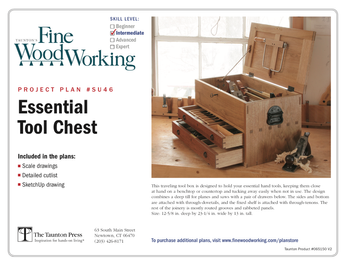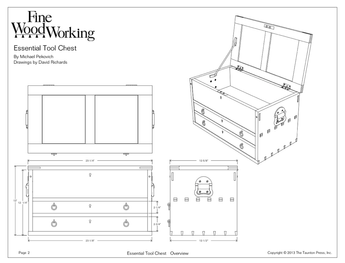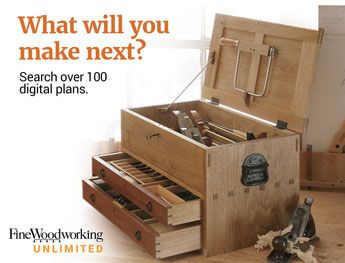Grizzly G0540 Horizontal Boring Machine
Well I received and set up the BM. It arrived in a solid wooden crate. There were no visible signs of problems. I learned my lesson to check closely for this. There is not much of a manual. There was basically a parts diagram and that’s it. I assembled with little trouble. There were 4 washers missing that go with the bolts holding the motor to the stand. I had some in the bolt bucket, so it was not a big deal. It was not worth the trouble of calling cs over. There are 5 basic parts to assembly. the legs, and crossbeam that attaches the legs to the base. The base itself, motor, and table assembly. It took about twenty minutes to assemble. The bolts for each part are in a separate bag and labeled appropriately. They are very lubricated. I had to spend a little time cleaning the excess off while I assembled. No rust. The table was square to the chuck vertically. It does have a mechanism to do a fine adjustment if required. I had to square the chuck horizontally to the table. That was done easily with a square and a gentle tap on the motor assembly. Once I had it zeroed in, I tightened the motor bolts and that was it. The slide mechanism both left & right and in & out are very smooth. The hold down clamp is very stout and will do the job. To test it out, I used a 1/2 shank 3/8 cut whiteside carbide spiral upcut bit (new). I will try end-mills as people have suggested, but I could not find any Friday and I wanted to play. The 3450 rpm motor does not have any problems cutting. I found that if I only took 1/8 passes left to right it did the best. I could go up to 3/16 with a little chatter and there was no vibration in the table, but I could tell it was not as smooth as the 1/8th pass. I tried oak, mahogany, and ash and they all did well. I also did a slot into a 45 degree angled cut with no problem. The only draw back was that with the table elevated as far as it would go, the center of the chuck was still 5/8 about the table. If I wanted to get the the slot closer to the edge, I could place a piece of mdf under it to elevate it some. The stops work fine. Once I set it up, I could do a 1/2 x 1.5″ slot pretty quickly. I think it will serve it’s purpose. Not bad for 275 + shipping. Just thought I would share.























Replies
Thanks for sharing. As a novice still trying to figure out exactly how I want to do M&T joints, I'm interested in this machine. Would be interested in hearing about more about it as you use it.
Some of of your photo's are too clear, but perhaps that is on my end. Did you get a little chip out in the oak?
No, there was not chip out. The quality of the pics is pretty low. I cut the quality down because a lot of users do not have the luxury of high speed, so big pictures kill them. If you E-mail me I can send better ones, but they will be large. I have been going back and forth between the floating M&T and the more traditional. I think this is going to do the trick. I'm getting ready to make a project that will let me know for sure. My wife is doing stained glass and I'm going to make a dresser type cabinet that will hold her glass. I will let you know.
you might try making the photos smaller in size rather than quality because hi speed or not those pictures could be of anything.. they are totally unviewable.
Unfortunately, the only camera I could find is a cheap piece of junk! My Nikon is on the blink. I could not find any way to get it done with the no name camera. I think it came in a box of cherios. I will take some better ones after I get my nikon back. Sorry about the quality.
When you get your Nikon back, have the pix put on a CD when they're developed, costs about an extra $4/roll at Walgreen's.You can reduce the image size to say, 4x6 and save them as a copy, then send the copies to the forum.If you don't have an image editing program, put them up and drop me an e-mail, I'll pull them off and re-size them for you.Leon Jester
Bones,
After lusting for years for a HSM, and not being able to find a used one, I bought an estate's tools and wood, and one of the strong motivating factors for the purchse was a Griggio HSM, from about 1980 or so. Loose tenon joinery is great! On mine, the table is capable of going high enough to mill the table. There is a small lip on the front of the table, which registers the stock square to the bit. So, I drilled and tapped the cast table, which is pretty easy, and used 1/4" machine screws to attach a 12mm BB table, a bit larger than the supplied table, which lets me clamp jigs and such with good convenience, free from the casting webs which are always in the way per Murphy's law. Just a thought. I have run 3" deep, 1/2" slots for through mortises, and with this long a bit one needs to go slow. Ohterwise, taking 1/4" or so in a pass, going either direction, presents no problem.One thing that I do is to cut the tenon stock just a drop heavy, and then bring it to size carefully with a handplane to insure just the right fit. It is quite quick, and I think preferable to trying to fit it right off the TS or planer. When milling up the tenon stock, I generally run a bunch of extra, and it just lives here till needed, in the "tenon pile."The only downside to mine was that it turned out that the 2hp motor fried almost immediately upon being used. Know that smell? It had sat unused for 15 years, I believe. Well, turns out it was a "metric" motor, and so instead of being about $200 or so, it was $500. The motor shop had to have it shipped to them out of Canada. When I picked it up, I saw their invoice in the box. They had paid $237 for it, plus shipping ($50 max?). I felt a bit taken advantage of, and perhaps should have shopped harder. The US motors were just the wrong size for this machine in all respects, and could not be used as the motor sits inside the casting of the body. All in all, however, I wouldn't trade it for anything. I think mine weighs in a 220 kg., which is just about #500. Not somehting you hnadle without some serious help. A bit tough to get into the basement, but we made it without injury. Glad I have strong friends.
I note that your tool has a drill chuck, and mine has a different style of chuck, much heavier. I don't know whether this other type of chuck is available aftermarket, and could be made to fit, but esp. on deep mortises, you will want to be careful as there is not much protection on these guys. Rick is a machinery gfuy, and so he might have some info.
Mine has no guard at all. I put a magnetic base light on the casting, set to shine right on the cutting area, so I can set it up properly with the side to side, and depth stops. Does your have these stops?
Enjoy your neew tool. You will find that you can make jigs to hold the stock at various angles, etc., to increase utility for things such as chair work, where the angles are rarely 90 degrees. One of my jigs is a 6" by 6" by 18" right angle fence, built very carefully to be dead on 90, and with it I can mortise with the stock held vertical. Nice to see that there is now an affordable HSM as I think the price on a new Griggio is about $4500. Ouch. This tool was not priced separately, so I do not know what I paid; part of a package deal for everything.Alan
http://www.alanturnerfurnituremaker.com
Sorry to hear about the motor, but I'm sure you are set now. You mentioned jigs. I have been thinking about that. The left to right stops are ok, but I want a simpler way to quickly adjust. The in and out adjustment will be the biggest challenge. The pin to adjust in and out travel, is not very convienient. I found that differnt thicknesses of blocks placed in the travel mechanism would adjust nicely, but I plan on coming up with something different. It's time to put the old noggin to work, but today is football. The wife is almost giddy that there are only three games left. Take care.
Bones,
Here is my first try at a jig. This one is for 1-1/4" wide 1/4" tenons for a bunch of cabinet door & drawer frames I'm making. It has two settings (left & right) since the tenon is offset to allow room for the groove for the panel. It works OK but I feel a much more flexible jig in my future.
One thing I've found is that, with the kind of chuck we have it's faster to bore a bunch of overlapping holes full depth and then making one side-to-side pass to clear the mortise. When I was milling maple side-to-side, even with light passes, there was too much chatter and the mortise ended up .010 fat. The approach I'm using now comes out dead on. FYI, I'm using 2-flute end mills.
Enjoy the games!
Wayne
Bones,
Mine came last week as well. Following some tips here, I did add a few drops of red loctite to the shaft taper cause the chuck fell off while I was testing it (luckily the end mill survived).
I ended up taking mine completely apart. Luck of the draw for $275, my table movement wasn't very smooth. There were corrosion rings on the guide bars. A little 600 grit wet-or-dry and new grease and it works much better now. The in-out movement is a bit stiff cause the casting is a little off, causing the lever to rub a bit excessively. Not a show-stopper though.
I do get a kick out of the low-tech work-arounds to the low quality casting/machining on the base, like the extra motor base adjuster bolts (mine didn't have washers either) or the leg leveler bolts. I don't have any problem with them, especially for $275. I do know that I am going to save tons of time with all the door frames I need to make for the new kitchen. Couldn't justify a $1K++ European machine but this will work just fine.
Now, if I can just find someplace to put it in this tiny overstuffed shop - LOL!
Enjoy yours!
Wayne
I'm going to use those bolts through the feet to attach it to casters so I can move it around. I put my other tools on lockable casters. It works great. Sorry to hear you had problems. Mine had no rust, and I expected to find some. Mine has a stamped date of 01/04. I guess it was the luck of the draw.
This forum post is now archived. Commenting has been disabled